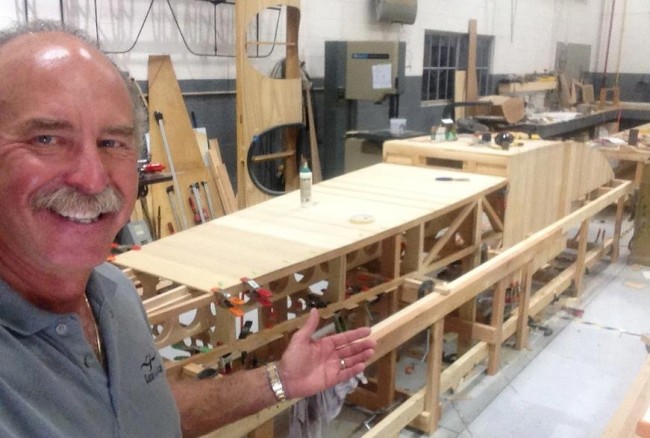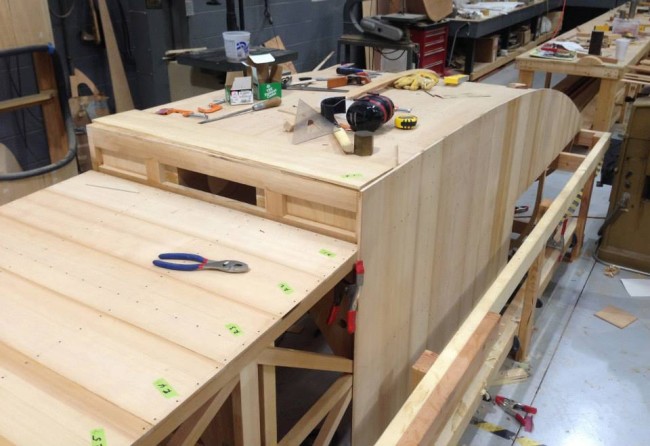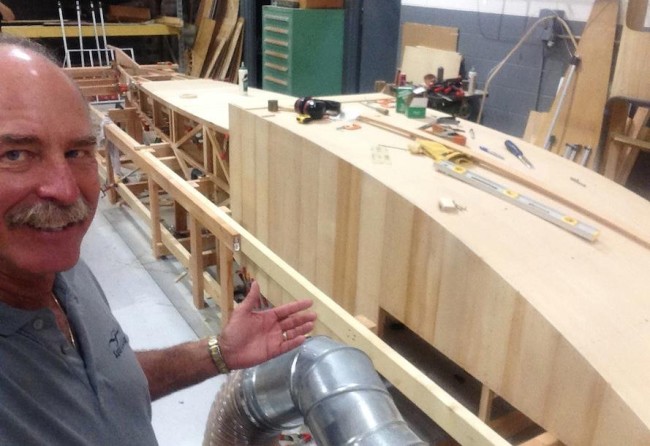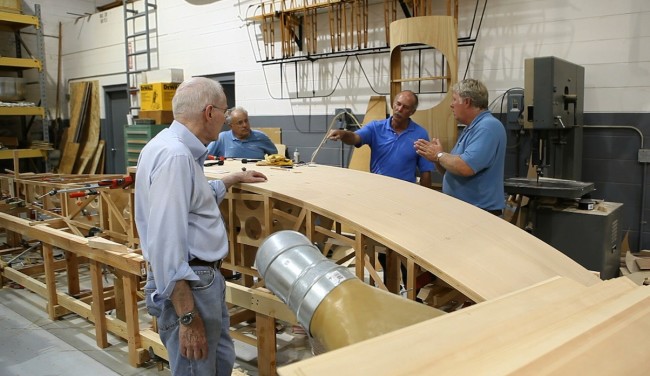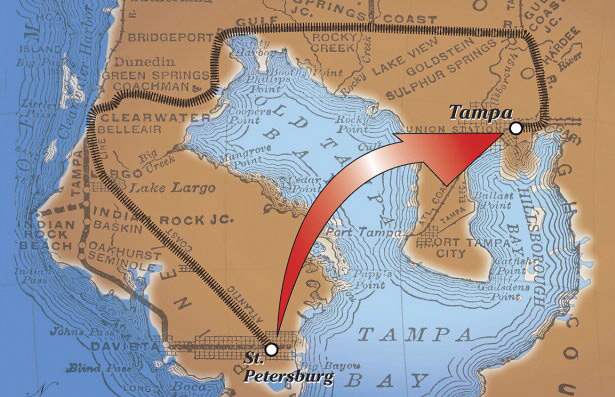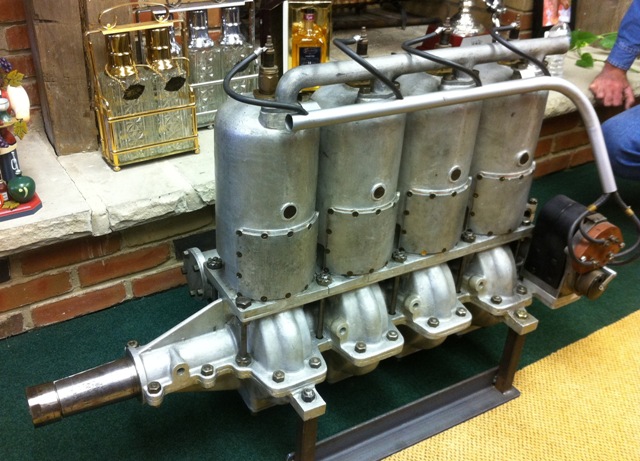
The Benoist project we’re building to recreate the 100th anniversary of the first scheduled airplane airline flight by Tony Jannus uses a six-cylinder two-cycle 75hp Roberts engine.
We know of only seven in the world and there are none to be purchased. This is one of two 4-cylinder 50hp Roberts engines I found and acquired.
We were able to borrow a six-cylinder engine from Old Rhinebeck Aerodrome that Cole Palen had acquired years ago to reverse-engineer. It had been in a crash and the case had been welded in several places.
Here’s a view of the back end with the gears for the single magneto, water pump and rotary valve induction tube.
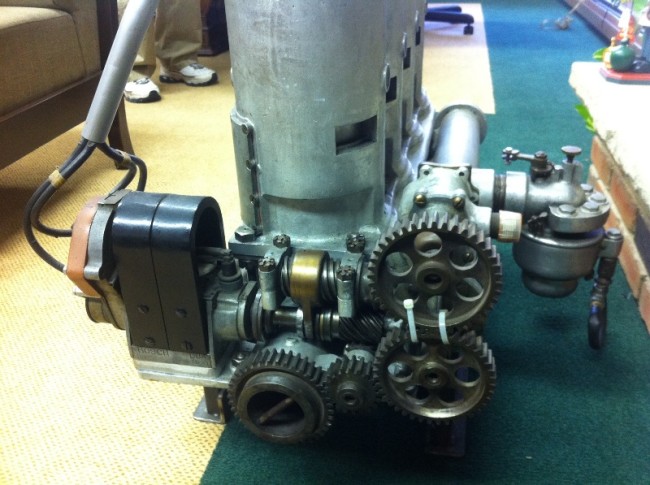
The 75hp six-cylinder engine has two more cylinders (12 ½ hp per cylinder) than the 50hp four-cylinder and uses two of the same carburetors.
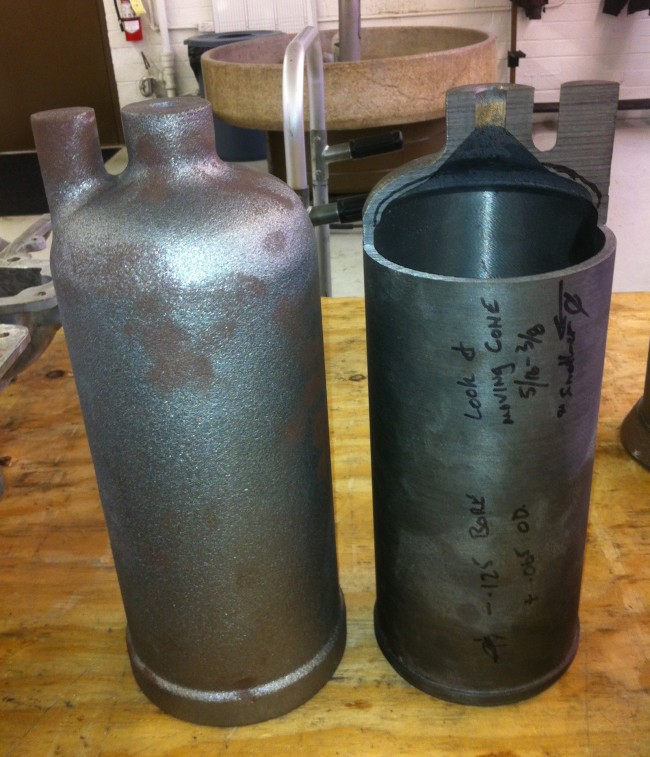
Here’s a rough cylinder liner casting on the left. The one on the right has been machined and the top partially cut out to check for proper thickness. It was actually too thin in one spot and the casting pattern had to be adjusted to compensate. Any bad parts and pieces can be melted back into the pot and used in a future attempt.
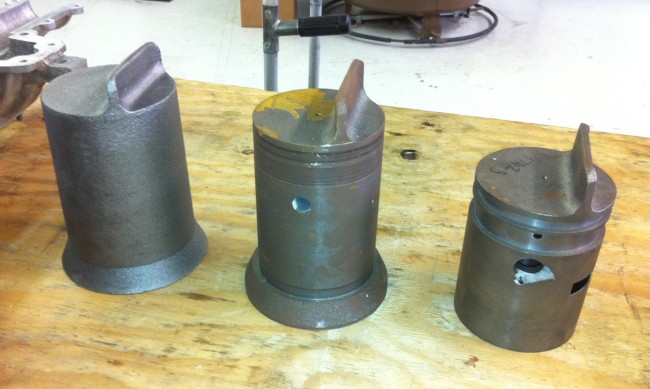
Here are steps from left to right in casting and machining the cast iron pistons.
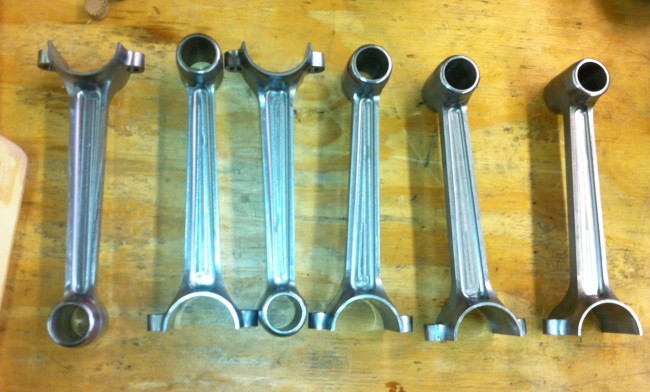
Here are six connecting rods for one engine. The big end connects to the crankshaft with two bolts and another curved piece and the little end connects to a piston with a piston pin. Each assembly will go up and down in the cast iron cylinder liner twenty times a second!.
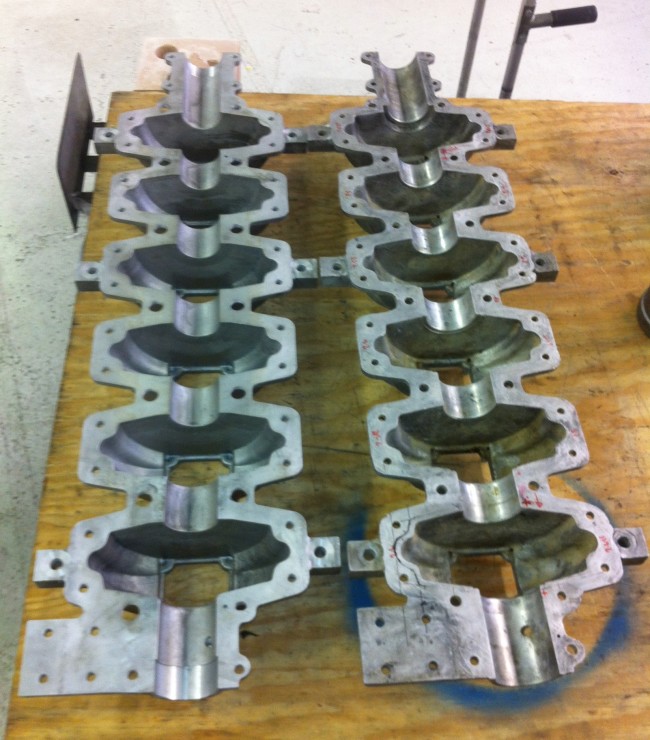
Here are lower crankcase halves. They were easier to make than the upper halves and were made first. The one on the right is from the borrowed original engine and the one on the left is newly made. The square tab at the lower left of each is where the magneto bolts on.
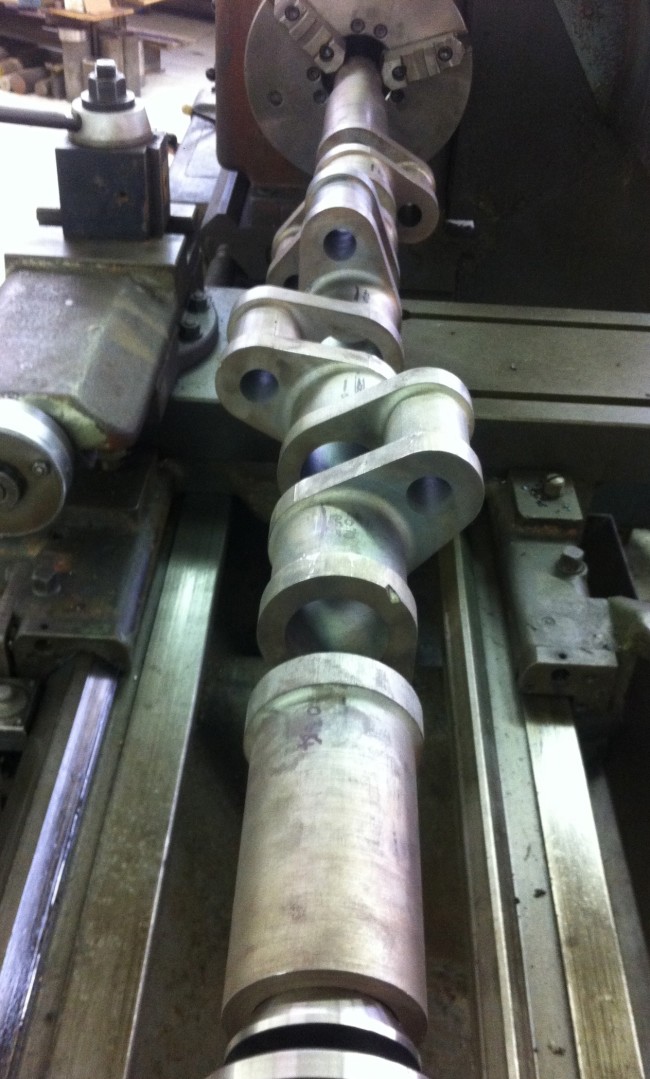
Here, the crankshaft is set up on a lathe for final machining. This started life as a 900 lb. solid billet. After much whittling down, and two sessions of annealing, it will end up weighing about 48 lbs.!
So what do you think of the progress so far?!
